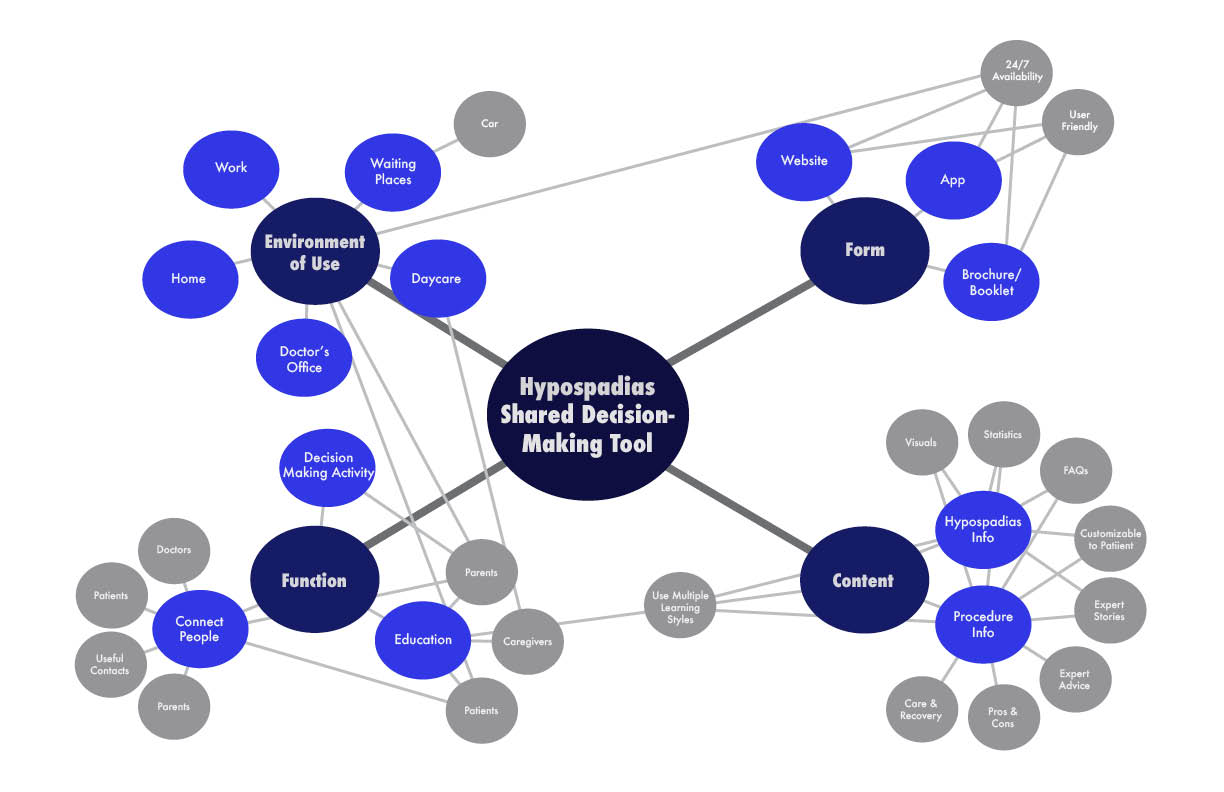Engaging Parents in the Development of a Hypospadias Decision Aid Prototype
Katherine H. Chan, MD, MPH1, Janet Panoch, MA1, Amr Salama, MD1, Elhaam Bandali, MS1, Brandom Cockrum, MFA2, Courtney Moore, BA2, Sarah Wiehe, MD MPH2.
1Department of Urology, Division of Pediatric Urology, Indiana University School of Medicine, Indianapolis, IN, USA, 2Department of Pediatrics, Children's Health Services Research Center, Indiana University School of Medicine, Indianapolis, IN, USA.
Background: Many parents who choose hypospadias repair for their son experience decisional conflict and regret. The purpose of this study was to engage researchers and parents of boys with hypospadias in the co-design of a decision aid (DA) prototype to help parents make decisions about hypospadias surgery.
Methods: We conducted a co-design workshop with researchers and parents of children with hypospadias, engaging them in a guided discussion of: a) their preferences and priorities regarding decision-making about hypospadias surgery, and b) their recommendations for a DA prototype. They ranked their preferences regarding information sources and decision aid content and their priorities regarding perioperative concerns, surgery goals and the decision-making process. They created DA prototypes in small groups focusing on format, function and content. All activities were audio recorded and professionally transcribed. The transcripts and worksheets were analyzed by six coders using a collaborative coding process, commonly used in human-centered design research, to identify themes and relationships between themes to inform the development of an affinity diagram (Figure 1).
Results: We conducted a co-design workshop and guided discussion in August 2018 with 10 parents (6 mothers, 4 fathers; 8 Caucasian, 2 African-American), ages 28-40, of hypospadias patients. Participants suggested that the DA might be used at home, work, daycare and the doctor's office. The DA tools created by the participants were user-friendly, interactive and available 24/7 (such as a website or smartphone application) and designed for a variety of learning styles. Key functions of the DA included educational content, connecting parents in an online forum and engaging parents in a decision-making activity. Parents also included customizable content about the incidence and spectrum of severity of hypospadias, a review of postoperative care and expert testimonials from parents.
Conclusions: Parents of hypospadias patients desire a DA that is user-friendly, multi-purpose, customizable to their needs and available 24/7. Future directions include focus groups with providers and parents for further refinement of the DA prior to pilot-testing.

Back to 2019 Abstracts




